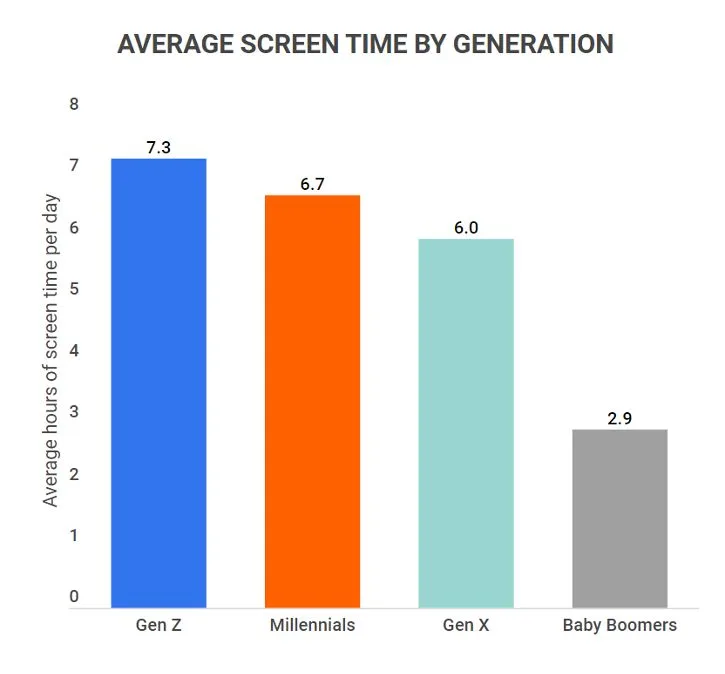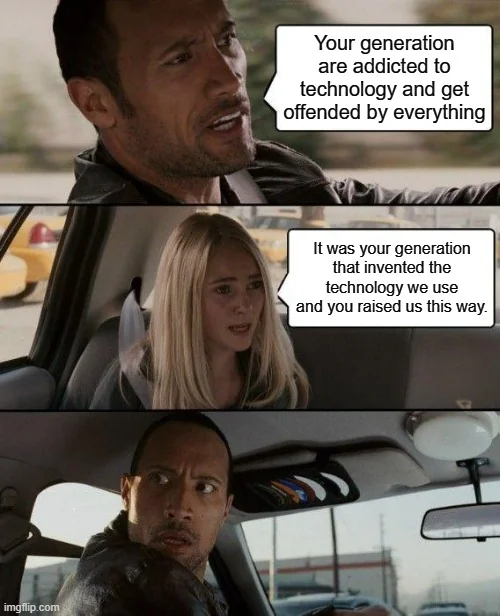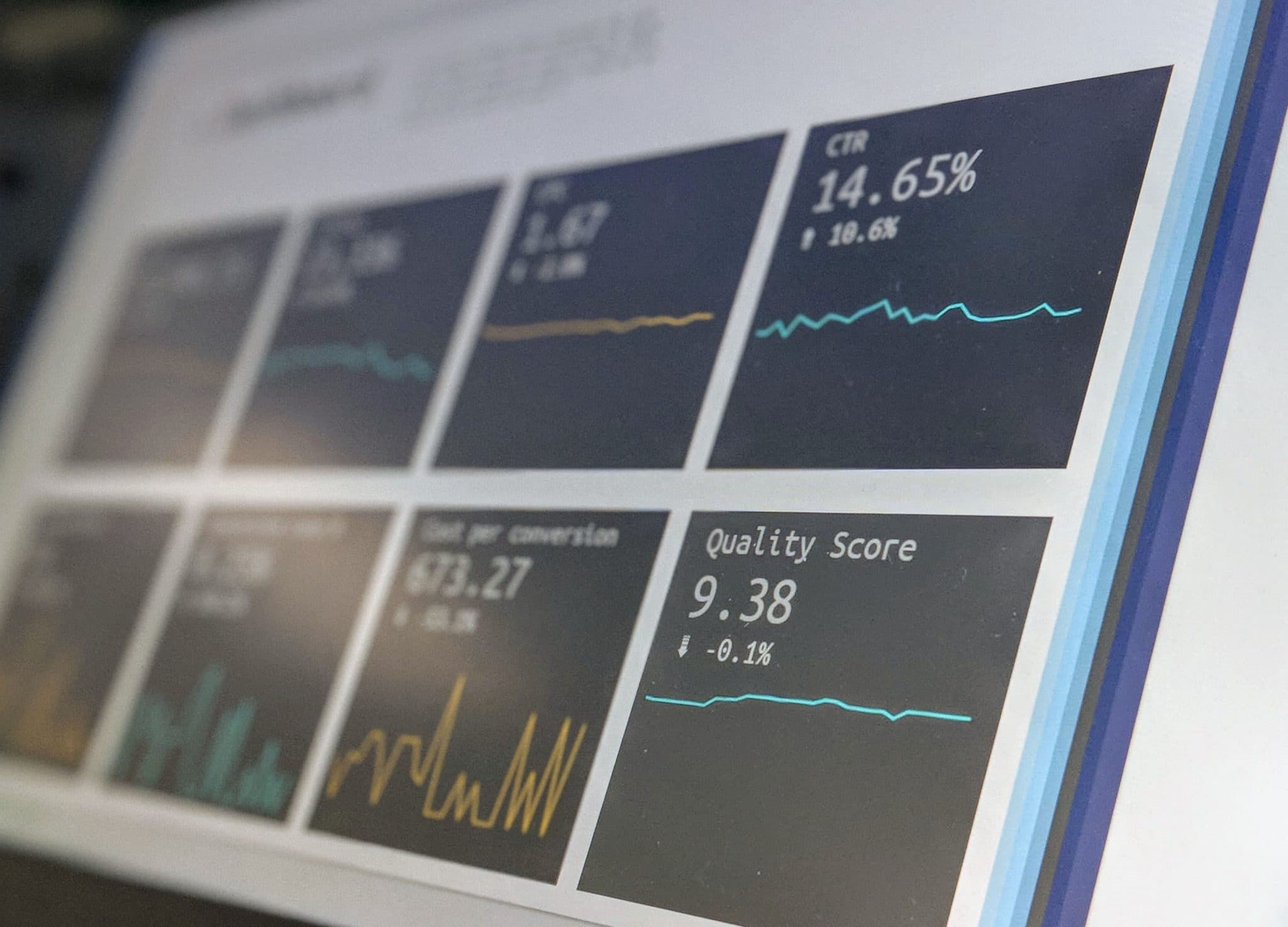Challenging Assumptions: How different generations actually use technology
As humans, we tend to make broad stroke assumptions about things. This can be very useful in our everyday lives for making time-efficient decisions.
In business, however, using a ‘common sense’ approach can often lead to undesirable outcomes.
When considering how to best serve a certain user group, our clever brains often tell us that the most obvious answer is the correct one. Often, it is, but sometimes it isn’t.
Weighty decisions about product or marketing investment shouldn’t be made based on hunches. That’s why we’re always shouting about user research and quality user data.
Looking broadly at different generations and the assumptions we make about them, we can see how commonly held beliefs only paint a part of a larger picture.
1. Baby Boomers (born 1946-1964):
Growing up alongside the beginnings of television and landline telephones, baby boomers experienced the first widespread access to lots of what we might now consider ‘old-school’ technology.
Their formative years didn’t really see the introduction of the modern computer at all, so adapting to advancing technology has come later in their lives.
As a result, it’s easy to draw the conclusion that older individuals tend to spend a lot less time online than younger generations, and do so with great difficulty.

Let’s be honest, we’ve all seen baby boomers exhibit a lack of tech literacy. Hell, the phrase ‘OK Boomer’ was hugely popular in recent years to point the finger at the ‘out of touch.’
Broadly speaking, of course they need a little more hand holding than most, but don’t be so quick to write them off as ubiquitously struggling to keep up.
In reality, their behaviours are becoming more and more online oriented. Their presence on Facebook and Youtube is significant, with 67% and 78% respectively being active on those platforms back in 2020. They’re increasingly shopping online since the pandemic (90%), and their online activity is trending upwards more than any other age group (3.6% increase per year).
Sure, they might find navigating modern interfaces difficult, but we must ask why that is the case. Do we blame a younger user when they get confused using something unfamiliar? It’s much more likely that the digital environment largely ignores the needs of the elderly, rather than that they’ve an innate inability to adapt.
We need to be embracing an inclusive and accessibility-first approach to how we design and communicate our products, particularly to older users.
Plus, they have the largest purchasing power of any generation, so reaching and empowering them to embrace technology is good for everybody.
(Stats from Statista, Marigold Engage, PYMNTS)
2. Gen X (born 1965-1980):
Gen X grew up with significant technological advancement. Video games, Walkmans, VHS and word processing to name a few, they essentially experienced the advent of personal computing and the emergence of several key technologies that laid the foundation of our current digital landscape.
Personally, I often lump them in with baby boomers when it comes to technology, and that perception comes from my own life experiences.
A few weeks ago, a Gen X friend of mine was struggling to get the time and date to read correctly on their new smartwatch, and they’d tried extensively to no avail. It was sorted in 5 minutes by a fellow Millennial.
Our own anecdotal experiences can lead us to some black and white thinking about groups of people. We’re all guilty of it in all aspects of our lives.
We then assume that we know what our customers want based on first hand experience, but that simply isn’t accurate on a larger scale.
Are Gen Xers actually hesitant to adapt to new technology? Are they less savvy than their younger counterparts? It’s not uncommon to hear these kinds of generalisations, but let’s not forget they largely established the likes of Google and Amazon, and built the bridge between analog and digital.
According to LinkedIn, a surprising quarter of Gen X are on Tik Tok regularly, and 90% of them are on some sort of social media. Of course there are exceptions, which again is why user research is so important for a realistic view and effective strategy.

Their adaptability shouldn’t be underestimated. Sure, my dad may like to text with a copious amount of ellipses, but someone the same age working in tech their whole lives may have a much firmer grasp on the actual building blocks of the tech we use daily than anyone his junior.
So don’t be fooled by your limited life experience, no matter how convincing it might be. Test those hypotheses!
(Stats from LinkedIn, Hubspot)
3. Millennials (born 1981-1996):
Having been born in 1994, I’m at the tail end of the millennial spectrum, bordering on a “Zillennial” really. My childhood had dial up internet and snake on my parents’ indestructible Nokia. Into my adolescence we transitioned to broadband, not so smart smartphones and the beginnings of social media.
It’s with Millennials that we started to hear of ‘tech dependency,’ the overarching sentiment being that they’re inept in the ‘real-world’ of face-to-face communication and unable to detach themselves from their online lives.
We’ve been hearing it our whole lives, deemed lazy and entitled for playing video games for hours on end, or getting anxiety about having to make a phone call.
Now, I consider myself very capable and understand most technology intuitively, and broadly millennials as a whole are very comfy in the digital realm. I am also likely addicted to my phone in a less than healthy way, but far from helpless with tasks that require some real-world interaction.
So are all Millennials really dependent on technology? The reality of such questions is always much more nuanced than we might like.
In short, yes, Millennials are more tech dependent than previous generations, but to what degree? How do we define who is and isn’t addicted to their phones when there’s only about an hours difference between average screentimes of Gen X, Millennials and Gen Z.

Graph courtesy of https://whatsthebigdata.com/average-screen-time-stats/
The point I suppose, is that the notion of tech dependency is slowly losing its meaning.
Looking back on my own childhood, the Overton window has shifted dramatically when it comes to how much online activity is acceptable in day-to-day life. The assumption that Millennials are streets ahead of older generations in terms of online addiction and tech literacy is less and less true as the years fly by.
4. Gen Z (born 1997 – 2013):
The first truly digital-first generation. With no frame of reference for what a world without an unlimited information machine in their pocket was like, the stereotypes are naturally more extreme than with Millennials.
Short attention spans and social media addiction, you’ve probably heard the rumours. To be honest, it’s going to hard for Gen Z to beat the extremely online allegations.
The detrimental effects of constant social media exposure are well documented, and one might assume that it’s rotting young people’s brains outright. It’s a mixed bag in reality.
Reports of boosted social connection, self-expression and access to health services are amplified by social media, but one can’t just decide to reap the positive benefits only. Social media is a complicated beast.
As for short attention spans, long form media such as podcasts proves popular among young people looking to escape the scrolling loop. A reported 82% of listeners also report not doing anything else while they listen, contrary to the multi-tasking teen stereotype, and 80% report doing so specifically for relaxation. Detaching from the online world is part of many Gen Zs daily habits.
Technology has been baked into their DNA. Gen Z are merely utilising the tools provided to them, can we really shame them for that?
One study finds that only 12% want to be influencers, and a hopeful 70% are part of a social or political cause. They’ve been handed a very uncertain world to navigate, to paint them all with the same self-obsessed Tik Tok brush is unfair and inaccurate.
They’re engaged in real world issues, they just view it through the lens they have been provided; technology.
(Stats from emarketer.com, Edelman)

So why is any of this important?
Broad generalisations help us make sense of a chaotic world. I’d probably be right in assuming that a poorly lit alleyway isn’t a safe place to hang around at night.
Where it’s not useful is when we make decisions about how to serve customers based on their belonging to a certain broad demographic, like their age.
You might think you intuitively know your audience, but groups of users are endlessly complex.
For example, a good starting point might be that you can reach zoomers on Tik Tok, but how do you communicate with them?
You might find that your potential audience might actually include their parents too, and your messaging just won’t appeal to both groups effectively without some fine-tuning.
When we design interfaces, we need to consider accessibility standards so everyone can use it, regardless of their age. Tailoring your product to a younger tech-savvy audience only isn’t just a bad idea, it might soon be legally questionable to ignore how everyone, regardless of their abilities, can use it effectively.
Luckily, we at Friday know how to get to the root of user behaviour, on both the micro and the macro scale. If you need help in understanding how the hell to give users what they need, get in touch with us to collaborate on whatever it is you’re working on.
Unless you’re just a clueless old boomer… (kidding!)


